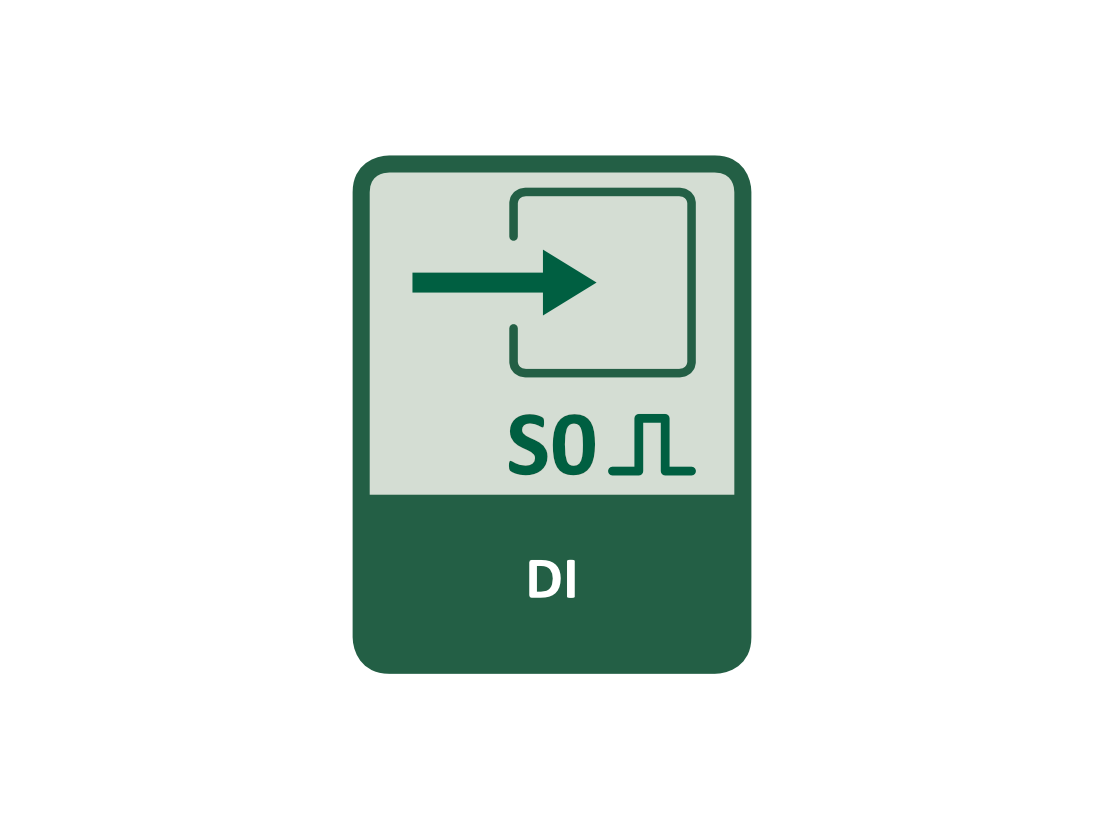
In the context of NETIO products
DI (Digital Input) green connector is 3 pin terminal block DI on some NETIO PDUs.
- 2 pins for external mechanical switch / dry contact
- 12V / cca 100mA to power external detectors or switch backlight.
External mechanical switch or some kind of sensor/detector can initiate defined PDU outputs sequence. We call these scenarios C&R (Condition & Rule).
DI state indication
- DI state (0 / 1) + counter is shown on the device web page.
- DI state (0 / 1) + counter is visible in NETIO Cloud.
- DI state (0 / 1) + counter is available in the APIs (JSON, MQTT, SNMP, …)
S0 pulse counter on the DI
DI on NETIO devices are able to count pulses based on S0 standard. It’s can be counting how many liters passed throught water meter or how many people passed through the corridor in the museum (light barrier).
You can connect to NETIO DI
Mechanical switch
- Button to activate day / night mode manually
- Button to switch Off screens when unauthorized person came to the OC room
- Button to activate manually shutdown process
- Button to load default configuration (studio lights)
Movement detector / PIR / door contact
- To detect people in the room
- People counter light bar for museums (sensor powered from 12V power output)
S0 pulse output of Water meter
- To combine NETIO PDU electricity metering with water meter
S0 pulse output of electricity meter
- Useful to analyze pulses from certified meter
- Useful to analyze power consumption of 3 phases meter

Supported NETIO devices
What Is a Dry Contact?
In the world of electrical devices, you'll often come across the terms "Dry contact" and "Wet contact" in American English. Let's break down what they mean.
So, what's the "Dry" in "Dry contact"? To put it simply, "Dry" means it doesn't need an external power source. To understand this, let's use a comparison involving water to explain electricity, a common practice.
For many years, people have used water as an analogy to explain how electricity flows. It's a natural comparison: "The water/hose analogy for electricity is a helpful way to explain concepts like voltage, current, and power. In simple terms, we can think of electric charge as water, voltage as the pressure of water, current as the flow of water, and power as the total amount of water flowing over a certain time."
A "dry contact" is essentially a mechanical connection that's isolated from any external power source. It doesn't require an external power supply to operate.
This means that when you connect external power source to a dry contact, it becomes "wet". You can think of it as being similar to the flow of water; when electricity flows through the dry contact, it becomes "wet" with electrical activity.
Keep in mind that a dry contact has to be wetted for it to work; however, you can still define it as a dry contact (pure mechanical) if the power source is not required.
What kind of external devices you can connect to the Dry contact DI (Digital Input)?
People commonly use dry contacts for devices like buttons, door sensors, electrical switches, alarm panels, smoke or PIR detectors with relay outputs, and float switches. What's unique about NETIO DI inputs is that you can also connect S0 pulse generators (like water or electricity meters) and additional accessories such as the NETIO T1 temperature sensor.
